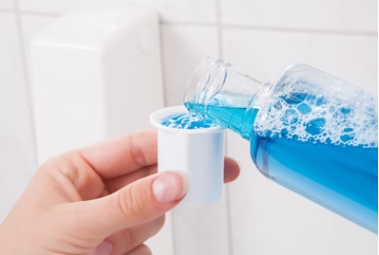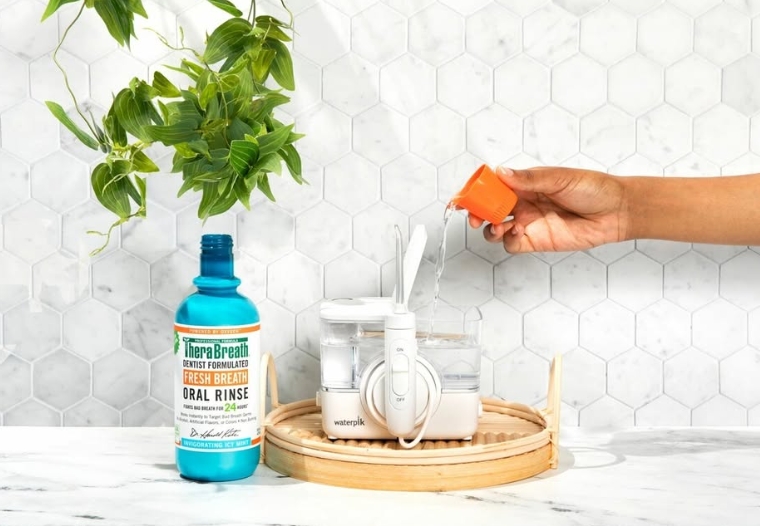Water flossers are becoming a popular tool for cleaning between teeth and along the gum line, offering a gentler alternative to traditional flossing. Many people wonder, can you put mouthwash in a water flosser? The answer is yes, and doing so can enhance your oral hygiene routine by freshening your breath and targeting bacteria more effectively. However, it’s essential to use mouthwash correctly in a water flosser to avoid potential risks to your gums and device. In this guide, we’ll explore how mouthwash can be used in a water flosser, along with its benefits, risks, and best practices.

What is a Water Flosser?
A water flosser is an innovative device that uses a pulsating stream of water to remove food particles and plaque from between your teeth and along the gum line. It is especially useful for individuals with braces, dental implants, or those who struggle with traditional flossing. Water flossers are easy to use, effective, and can be gentler on sensitive gums compared to manual flossing. Many people find them a valuable addition to their oral care routine, offering a quick and efficient way to achieve better dental health. Additionally, some models come with various pressure settings to cater to different sensitivity levels.
Can You Put Mouthwash in a Water Flosser?
You can put mouthwash in a water flosser, and many people do so to enhance their oral hygiene regimen. Adding mouthwash to the water flosser helps to freshen breath, target bacteria, and provide additional oral health benefits. However, it's important to use mouthwash correctly in a water flosser to avoid potential damage to the device. Some mouthwashes contain ingredients that can harm the internal components of a water flosser, so it’s crucial to dilute the mouthwash and ensure compatibility with your device. When used properly, mouthwash can complement the benefits of water flossing, leading to a healthier mouth and improved breath.
Benefits of Using Mouthwash in a Water Flosser
Enhanced Freshness and Breath Control
Using mouthwash in a water flosser can significantly improve the freshness of your breath. Mouthwash is designed to kill odor-causing bacteria, and when combined with the powerful jet stream of a water flosser, it helps to reach areas that are harder to clean with traditional brushing. This combination gives your mouth a long-lasting fresh feeling, making your daily oral care routine more effective. By reaching deeper into the gum line and between the teeth, the mouthwash is more effective at freshening your breath and reducing bacteria that contribute to bad odors.
Increased Reach and Effectiveness
One of the key advantages of using mouthwash with a water flosser is the increased effectiveness in removing debris and plaque. The pulsating water jet from the flosser combined with mouthwash ensures that hard-to-reach areas between teeth and along the gum line are effectively cleaned. Regular flossing can sometimes miss certain spots, but a water flosser with mouthwash helps to reach those areas, ensuring a more thorough clean. This enhanced reach is especially beneficial for individuals with braces, implants, or tight spaces between teeth where traditional floss cannot easily reach.
Potential for Better Plaque Removal
Mouthwash often contains ingredients that target plaque and bacteria. When used in a water flosser, these ingredients can be more effectively delivered to the teeth and gums, improving the plaque removal process. The combination of water pressure and mouthwash ensures that plaque on both the surface of teeth and along the gum line is disrupted and washed away. Regular plaque removal helps prevent tooth decay and gum disease, making this combination a great addition to your oral hygiene routine.
Convenience of Combining Mouthwash with Water Flossing
Incorporating mouthwash into your water flossing routine can be both time-saving and convenient. Instead of performing mouthwash and flossing separately, you can accomplish both tasks in one simple step. This makes it easier to maintain good oral hygiene without adding extra time to your routine. For those with busy lifestyles or who struggle with consistency, this two-in-one method can make oral care easier to manage while offering enhanced benefits. You can enjoy the freshness of mouthwash and the cleaning power of a water flosser simultaneously.
Potential Risks and Precautions
Mouthwash Ingredients That May Damage Water Flossers
Certain mouthwashes contain ingredients, such as alcohol and harsh chemicals, which may cause damage to the internal parts of a water flosser. These ingredients can break down seals, o-rings, or cause corrosion to the device over time. Before using mouthwash, it’s important to check whether the mouthwash is compatible with your water flosser. To prevent damage, opt for alcohol-free mouthwashes that are less likely to harm the device. Additionally, consider diluting the mouthwash before use to reduce the risk of any potential harm to the internal components.
Effects on Sensitive Gums and Tissues
Some mouthwashes contain strong antiseptic or whitening agents that could cause irritation to sensitive gums and oral tissues, especially when used in a concentrated form. If you have sensitive gums or mouth conditions like gingivitis, using mouthwash in a water flosser could lead to discomfort or a burning sensation. It’s important to choose a gentler, alcohol-free mouthwash and always dilute it before use in your flosser to minimize the risk of irritation. If discomfort persists, you may want to consult with your dentist.
Overuse of Mouthwash in Water Flossers
Overusing mouthwash in your water flosser can have negative effects on both your oral health and the device. Excessive exposure to the active ingredients in mouthwash can lead to dryness in the mouth, altered taste perception, and even damage to your taste buds. Additionally, frequent use of mouthwash can affect the balance of bacteria in your mouth, potentially causing a dry mouth or irritation. To avoid these issues, it’s important to use mouthwash in moderation and always dilute it with water, using a safe ratio of 1 part mouthwash to 3 parts water.
How to Use Mouthwash in a Water Flosser Safely
Choosing the Right Mouthwash for Your Flosser
Not all mouthwashes are suitable for use in a water flosser. It’s important to select a mouthwash that is alcohol-free and does not contain harsh chemicals that could damage your device. Non-alcoholic mouthwashes are typically gentler on both your gums and your flosser, making them a better option. Additionally, look for mouthwashes that offer antibacterial or plaque-fighting benefits to enhance the cleaning process. Always read the label to ensure the mouthwash is compatible with water flossers.
Diluting Mouthwash for Safe Use
Dilution is crucial when using mouthwash in a water flosser. Mixing one part mouthwash with three parts water helps reduce the concentration of active ingredients, making it gentler on both your gums and your device. Dilution also helps to avoid mouth irritation and overexposure to alcohol or other harsh chemicals present in some mouthwashes. Always mix your solution in a separate container before pouring it into the flosser’s reservoir.

Proper Techniques for Using Mouthwash in a Water Flosser
To use mouthwash in your water flosser, first dilute it and pour the solution into the water reservoir. Follow the manufacturer’s instructions for your specific device, setting the appropriate pressure and speed settings. Move the water flosser along the gum line and between your teeth, ensuring you target all areas. Be mindful not to swallow the solution and spit out any excess mouthwash after each use to avoid swallowing concentrated mouthwash.
Cleaning and Maintaining Your Water Flosser After Use
Cleaning your water flosser after using mouthwash is essential to maintain its performance. After each use, rinse the reservoir thoroughly and run plain water through the device to remove any mouthwash residue. This prevents any buildup or clogs in the system, ensuring the longevity of your flosser. Regular cleaning helps prevent bacterial growth inside the flosser and keeps your device functioning optimally.
Conclusion
Incorporating mouthwash into your water flossing routine can offer multiple benefits, from improved breath control to better plaque removal. However, it's important to use it correctly to avoid damage to your device and potential harm to your gums. Can you put mouthwash in a water flosser? Yes, but always dilute it and choose a gentle, compatible product for your flosser. By following these guidelines and using the right techniques, you can enhance your oral hygiene routine without compromising the health of your mouth or your water flosser. Proper usage ensures the longevity of your device and a fresh, clean smile every day.
FAQ
Is it safe to use mouthwash in a water flosser daily?
Yes, using mouthwash in a water flosser daily is generally safe if you dilute the mouthwash and choose a gentle, non-alcoholic formula. Overuse can lead to irritation, so moderation is important.
Can using mouthwash in a water flosser replace traditional brushing?
No, mouthwash in a water flosser cannot replace brushing. While it helps clean between teeth and freshen breath, brushing is still essential for cleaning tooth surfaces and preventing plaque buildup.
What type of mouthwash is best for use in a water flosser?
Non-alcoholic, gentle mouthwashes are ideal for water flossers. They are less likely to cause irritation or damage to the flosser. Always avoid mouthwashes with strong chemicals or alcohol.
